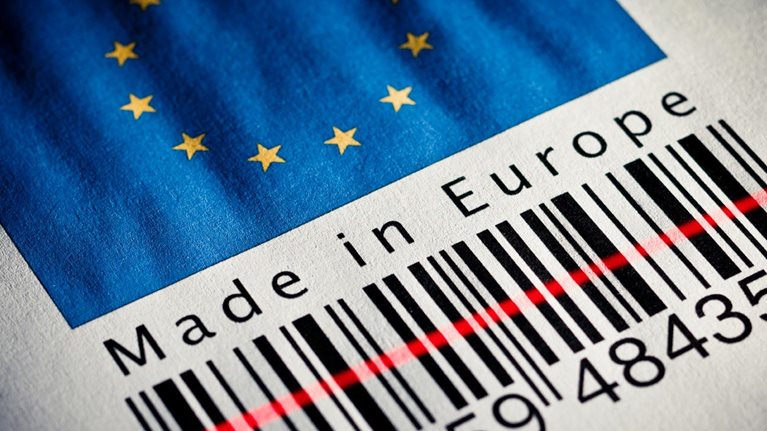European consumers, like their counterparts elsewhere, are slashing spending in the face of economic pressures and searching vigorously for value in the purchases they are making. This is creating a hostile climate for businesses serving the European market—and signs are that an even deeper, perhaps unprecedented, consumer retrenchment could be in the making. How can companies respond to such an onslaught?
Knowing one's customer is always a vital component of business, but never more so than in a recession, when spending patterns lurch dramatically away from normal trends and become tricky even for the savviest businesses to read. Finding out which product categories consumers are likely to target as they close their wallets is a vital part of market intelligence. Another is to understand the tactics consumers use as they try to cope with the assault on their spending power.
Europe's consumers are employing five key tactics, according to new research from McKinsey Global Institute and McKinsey's Consumer & Shopper Insights group. Which ones they use vary from market to market—something businesses need to understand if they hope to overcome consumer pullback.
1. Setting Limits
By far the most popular approach used by consumers is simply to control their spending. Some 69 percent of those surveyed by McKinsey in December 2008 say they are setting and sticking to personal budgets and devising new rules to help them limit their expenditures, such as avoiding large stores or paying only with cash rather than with credit cards.
To deal with this shift in consumer behavior, companies should help customers work within their new limits. (Better that than have customers abandon consumption altogether.) Retailers, for instance, can display budget or value items more prominently. Telecom providers can help spending-conscious customers by offering larger arrays of fixed-rate plans or prepaid cards. Sellers of expensive goods can expand leaing programs or offer enhanced warranties to underscore long-term purchase value.
In the United States, Sears Roebuck (SHLD) has revived a simple solution to help consumers better manage their expenses: the classic layaway plan, which lets customers have merchandise set aside until they finish paying for it in installments. It's an old-fashioned alternative to credit cards or paying in full up front. The company's Kmart unit signed up 1.4 million new layaway customers last year—and noted at its annual meeting that many of them bought additional merchandise when they visited stores to make their biweekly layaway payments.
2. Buying Only As Needed
The second tactic consumers use to curtail spending is to replace items only when needed. Many say they are prepared to delay new purchases, continue using products they already own for longer, or buy secondhand. This tactic is especially prevalent in the case of big-ticket items such as cars, electronics, and furniture. When it comes to so-called fast-moving goods (which are consumed and replaced quickly), consumers can't put off buying them altogether, so they are focusing instead on avoiding waste. From food and drink to cleaning supplies and medication, consumers say they want to buy only the quantity they need.
Companies can have a variety of potential responses. Makers of consumer products can introduce smaller packages to minimize waste. Coca-Cola (KO), for instance, has recently introduced a 20 percent smaller bottle at a lower price. Durable-goods makers faced with slower replacement cycles can offer product accessories or enhancements that stretch the life of a product. And to assuage consumer concerns over large investments, companies can experiment with innovative support or warranty options. One major automaker, for instance, recently offered to guarantee the retail value of its vehicles if they are returned within two years of purchase.
3. Doing It Yourself
Once largely the province of home-improvement and furniture businesses, DIY is spreading into many other sectors. People are opting to eat in rather than go out, watch DVDs or videos on demand instead of going to the movies, cleaning their own homes rather than employing domestic help, and even walking or cycling instead of using their cars.
For companies, the answer is to pinpoint the advantages of their products compared to homemade alternatives or to position their products as lower-cost alternatives. An even bigger win might be to communicate how to use a product at home—say, an in-home DIY pedicure as an alternative to a trip to the salon.
4. Looking for Value
Consumers are becoming extremely conscious of value, thinking more critically about where they spend their money and whether they're getting a good deal. They are eschewing frills and scrutinizing product features to avoid overpaying, often using the Web or other information channels for research. Unbranded products and services are becoming increasingly popular. This "value" trend applies especially in groceries, insurance, health care, and communications—leading to substitution of offerings within the same industry. It may also engender permanent shifts in consumption patterns, such as toward lower-cost private labels.
To fight back, companies need to highlight value, clearly articulating the features, benefits, and availability of their products across all channels. Promoting low-cost private labels or introducing basic versions of products at a lower price point is an effective strategy. British supermarket giant Tesco (TSCO.L), for instance, has expanded its private-label offerings across the value spectrum—even Tesco's broadband service comes in "Value" and "Finest."
5. Shopping on Sale
Finally, as recession-stressed consumers shop around more aggressively, they are devising new "smart shopping" approaches. Emerging channels, including the Internet and hyperdiscounters, are becoming more popular, and consumers are showing themselves willing to delay purchases until they can take advantage of sales and special promotions. This tactic is particularly prevalent in the case of groceries, electronics, toys and games, and apparel.
For companies, the key responses are to target promotions at the right consumers and to be present across all channels. That could mean winning a search-engine war on price criteria, offering Internet promotions to stimulate online growth, or spinning off a discount outlet to compete with hyperdiscounting channels. But even in the Internet era, companies must not forget about tried-and-true tactics to reach consumers. Procter & Gamble (PG), the consumer-packaged-goods giant and the United States's largest advertiser, recently shifted some of its advertising budget back to coupons.
All of these shifts in consumer sentiment and tactics are being forged in the context of a recession. But given long-term pressures on consumer-spending power, many may prove to be long-lasting features of the landscape. Experience shows that once consumers make major changes in their buying habits in response to major economic incentives—as they did when hypermarkets arrived—these changes tend to stick. Those companies that look beyond mere survival and instead adapt their products and marketing mixes to these new consumer tactics will position themselves most effectively not only to retain customers during the squeeze but attract new ones as the recovery arrives.
Georges Desvaux is a director at McKinsey's Paris office and leader of McKinsey's Consumer & Shopper Insights Practice, which co-led this research. Baudouin Regout is a senior fellow at McKinsey Global Institute.
This article originally ran in Businessweek.


